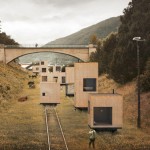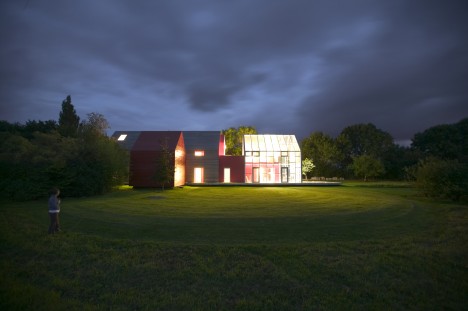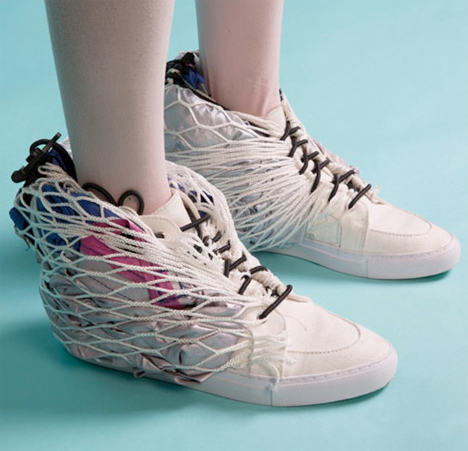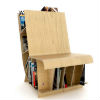The post Expand Your Creativity by Taking Self-Portraits appeared first on Digital Photography School. It was authored by Stacey Hill.

If someone asked me “what is the ONE thing you have done that improved your photography the most?” my answer would be Self Portraiture. No, not your average cell phone social media shot, but a fully-conceptualized project. One that is planned and executed down to the last detail, and then shot by the photographer who is also in front of the camera.
I don’t shoot people because they can be awkward and self-conscious in front of the camera. Often they have no idea how to pose, don’t listen and take direction, and can be impatient with the process. They can also be easily distracted, and you have to spend a lot of energy to keep them happy and engaged. For those who make a living shooting people/portraits, I salute you because it is hard work.
However, for those of us who don’t like to photograph other people, we are then left with a dilemma. Having a human in the shot helps us tell a more involved story, gives the viewer something to relate to, and helps us engage with the image. Therefore, using ourselves in the picture becomes a choice. Which leads us to the challenge; how do we plan out an entire image and shoot it, while being IN it at the same time?
Not only do we have to design and plan the whole shoot, which is enough of a challenge anyway, but we also have to put our self in front of the camera at the same time.
So we take something that is hard to do and make it even harder. Why would we do that? What are the benefits?

I had to come back and do this shoot a second time because all my first set of shots were not 100% in focus. I marked my focus point with a white stone this time
Creative Freedom
Using yourself as the model gives you enormous creative freedom. It allows you to try creative directions a paying client may not want to do. You can be adventurous and take more risk with the shot style.
Some themes you could play with include:
- 50’s pinup style shoots or burlesque or lingerie
- Cosplay with lots of armor and weapons
- Western-themed with a horse and a lasso
- Fairytale redo of Cinderella or Red Riding Hood
- A fantasy wedding theme
- Pirates
- Sport
- 1920’s speakeasy
- Zombie horror
- Elaborate composited scenes not possible in reality like levitation and flying furniture and people

Sticky fake blood looks effective for this zombie-themed shot. It tells a story with just the hand and arm.
Thinking outside the box
There are so many more ways to create a self-portrait. You can use your whole body or only a part of it. Using the hands alone can tell stories in so many ways. Many people do not like having their face in the frame, and showing complex extreme emotion is a challenging concept for a lot of people.
Why are our portraits often of people smiling and being happy? Do we not also feel sadness, grief, anger, confusion, depression, anxiety, despair? How can we explore the full human condition?
What are the other stories we can tell using the full range of emotions available to us? How else can we create powerful emotive imagery? What stories can we tell that encompass our vision and experiences?
Are there things we personally find challenging or interesting? What fascinates and drives us? Are there demons dwelling in our psyche to be uncovered and exposed in front of a lens? What is our story? Do we want to share a reality or instead craft an alternate fantasy world instead?

My mantra is “I want my images to evoke a response.” Any response is fine. Just so long as my images are SEEN, not just scrolled past on the phone. How can they stand out from the crowd of the millions of other images uploaded every minute online? I also want them to be uniquely mine by permitting myself to create what is necessary to get a specific shot.
My question to you is “how do you get someone to stop scrolling and see YOUR image, or to like or comment on it?” How do you innovate with your imagery to make it different, noticeable or more engaging?

Learn to take risks
For the record, there is nothing wrong with the traditional style of portrait/self-portrait images, but there are those of us who strive for something more. We strive for something different, something extreme or extraordinary. In which case, starting with yourself is an excellent way to experiment in a safe, controlled environment. An environment where it is okay if you make a mistake and take twice as long to do something because you are only using your time. Somewhere everything you try is a learning experience and often a valuable one.
However, putting yourself as the subject in a shot is a risk. Everyone suffers the same doubts. “Will I look OK?”
“Will people like this image of me?”
“I hate how my face looks when I smile” and so on.
Underneath we are all the same fragile creatures, so putting yourself front and center takes a lot of courage.
If you are choosing to do something more creative, then the risk may feel greater.
“Will I look like an idiot dressed as a pirate?”
“I’m afraid of doing a nude or lingerie shot.”
It is easy to worry about what people think.
It can also be hard to overcome the ingrained societal concepts of good or expected behavior. Society expects us to be smiling and happy in a portrait shot. Many people do not cope well when presented with your screaming face covered in blood!
You may feel concerned about going outside to shoot where other people can see you.
“What is this person in a strange costume doing making weird poses in front of the camera?”
Yes, that is a real thing.
My response to that is first of all, who cares what other people think? Second, if we want the shot of a particular place to tell a story, then we do what is necessary to get the shot. Are we risking embarrassment by doing this? Maybe, but I am also comfortable with the idea that no one has died of embarrassment.
Breaking through my comfort zones and pushing my boundaries is one of the most valuable things I have done to improve my photography. Self-portraiture has been a big part of that journey because it gave me the freedom to take risks and try something new. Because I am using myself as the model, if it doesn’t work, I can try again. I can try something different, or refine my process in a better way.
Think about how you could tell new or different stories if you had the time and made the opportunities to craft self-portrait images that tell your story!

Self-portrait secret weapons
- A Wireless Remote
- Shooting Tethered (either cabled or wireless with a trigger)
A wireless remote
Having a wireless remote is faster and more efficient. You can get yourself into position and shoot a whole range of different poses without having to dash back and forward between the camera and your position.
Shooting tethered
If you are in a studio or working close enough to the camera, shooting tethered makes the process even better. You can make sure your pose is within the frame, can see any issues and adjust them quickly. Shooting tethered allows you to fine tune everything while you are shooting the scene. You save time too, in case you cut your head off accidentally and need to reposition again and again.
Being able to see how the final image looks on a bigger screen is also very helpful for creative direction. Several of my shots I would not have conceptualized without the opportunity to see the potential of them on the laptop screen. Sometimes merely adjusting the tilt of the head or the angle of the chin completely changes the tone or feel of an image.

Slightly out of focus while I was trying out shooting tethered for the first time. Helped to position the fan in exactly the right place
Give yourself time to play
When you are the only set of hands and have to be in two places at once, it takes time to set the shot up. Give yourself plenty of time to shoot, so there is no rushing. That way you can deal with any issues and be relaxed about your time frame.
Also, allow yourself time to play and experiment while in front of the camera. By having time to play, you can spark up new concepts and ideas you didn’t initially have. Ideas that can turn out to be valuable. I have specifically scheduled time in my studio with a few props to experiment with a concept. With no specific intention for a shoot, just time to create visually in an unstructured manner. I can take small risks, try new things, move on to the next idea and experiment.
This exercise has taught me a great deal about posing, and how to move the body to get the best visual outcome. This exercise is invaluable for talking to portrait clients later, as you can empathize with how odd it feels, but explain why it matters too.

Planning a self-portrait image
Many elements go into creating an image. For example, subject, light, story, and mood. With a self-portrait image, you have to start from the beginning and build the entire picture. You must integrate all the necessary elements in such a way that allows you to create both behind the camera and in front of it simultaneously.
1. What
What is the concept or idea behind your image?
2. How
How are you going to execute it? What constraints or limitations are there? What are the technical or physical challenges and what lighting is needed?
3. Where
Where do you shoot it? Do you shoot inside or outside, or in a specific place? Is the background composited in later?
4. Theme
What styling or theme do you want the shot to have? Be as creative as you like or can afford.
5. Pose
How will you be posed? Is it a pose you can hold and adjust easily for a range of options? Is the pose comfortable and safe?
6. Props
What props are needed to tell the story? Do you require hair, makeup, clothing, or other accessories to tell the story?
7. Extras
Some other things you may need to consider are: site permissions, shooting fees, access, public audience, personal safety, weather conditions, and travel distance/time.
Other considerations
These are all the things you may need to account for if doing a shoot with a client or a model. You can go the safe route and do classic headshots, or outdoor portraits in a garden. It is a safe option when dealing with a client who may not want a more challenging style of image, may not have the time or budget to get dressed up in costume or isn’t interested.
Figuring out how to do this by yourself (assuming you don’t have any assistance) can take some practice. If you have an elaborate, complicated costume, can you get dressed in it by yourself? Can you do it in the back of your car if there isn’t anywhere else you can get changed? Can you wear it and drive at the same time?
How much gear are you carrying? Can you take it in one trip to the session site? Are you and your gear safe while working outside?
Everything becomes much more complicated. You need to take a normal approach to things and make it even simpler. Then you repeat until every stage is possible for one person to achieve.

The final edit from the original shot seen above
Conclusion
Using people in images helps tell an engaging visual story. However, not all photographers have the luxury of friends/family to pose for them or can afford a model. Some photographers may prefer not to deal with a stranger due to the complexity of the shoot, and the time required. So putting yourself in the frame may be the only option.
Putting yourself front and center can be intimidating. Some of us prefer to be behind the camera. However, we can dress in costume, wear wigs, elaborate makeup, masks or shoot in such a way that our identity is not apparent.
Masking your identity also forces you to be more creative with how you think about staging and shooting your image. It can be a challenge because everything takes longer and the complexity increases with the need to be both in front of the camera and composing the shot.
There are so many learning opportunities and experiences to be had by taking the time to play. When it is just you and a camera, there is great freedom involved to try random concepts and ideas. Things you may not have ever considered before.
Pinterest and Instagram are great places to find inspirational ideas. Start making yourself a board, gather props, take a deep breath and put yourself in the frame.
It will be tough going initially, but it is worth it. Even just for the learning experiences, you gain from making mistakes. However, don’t let that stop you. Go forth and create!
Share with us some of your images below.
The post Expand Your Creativity by Taking Self-Portraits appeared first on Digital Photography School. It was authored by Stacey Hill.

Digital Photography School





























































You must be logged in to post a comment.